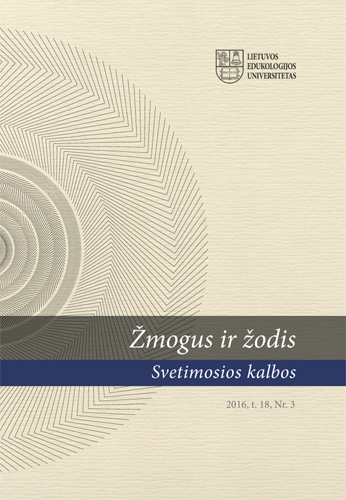Из балтийской гидронимии Верхнего Подонья
From the Baltic hydronymy of the basin of the upper Don
Author(s): Maxim A. YuyukinSubject(s): Lexis, Comparative Linguistics, Eastern Slavic Languages, Baltic Languages, Philology
Published by: Vytauto Didžiojo Universitetas
Keywords: (Old) Russian language; Baltic languages; toponymics; etymology; hydronym; basin of the Don; Baltic substrate;
Summary/Abstract: This article deals with etymologies of five hydronyms in the basin of the Upper Don that, according to the author, are of Baltic origin: Kosorža (the old form is Kosoža)< the hydronymical stem Kas- (or, if we proceed from the form Kosorža, Kasar-) (from *kasti ‘dig’) + the final -(o)ža that occurs in several other Russian hydronyms of the Baltic origin; Polsen’< *Palš-in- : *palšas ‘light grey’; Šušpanka – etymologically identical to the Lithuanian river name Šiáuš-upis and the related ones: cf. Lith. šiušénti, šiùšinti ‘rustle’, ablaut šiáušti ‘tousle’, Lett. šaustiês ‘stand on end (about hair)’ + *upė ‘river, stream’; Strutiľnoe – related to Lithuanian Strautẽlis and others: Lith. dial. sraũtas, sriaũtas, straũtas, striaũtas, Lett. straũts ‘brook’; Usman’ – cf. Lett. Ausmaņi, Ūsmanis, Usmaņus strauts; Set’ma – cf. Sietas: Sieta, Sietuvà, and others: Lith. sietuvà, dial. siẽtuva, sietis, Lett. siets, sietis, sietava ‘deep (or wide) place of a river; middle of a river; ford’. These hydronyms characterize various natural features of a reservoir. Their word-formative structure is easily clarified by comparison with the data of the Baltic languages: in all of them (except the compound name Šušpanka) formal elements corresponding to the Baltic nominal suffixes can be distinguished. These names (except Kosorža) are located on the left bank of the Don, and apart from the hydronyms Šušpanka, Usman’, and Set’ma, significantly extend the south-east border of the Baltic hydronymical area known so far. The hydronyms investigated in this article increase the number of the Baltic river names in the basin of the Upper Don, mentioned by V. N. Toporov, that are significant in making a more accurate definition of the Baltic settlement area in this region (if we take into account the fact that the total number of reliable Baltic etymologies in the hydronymy of the basin of the Don is extremely small).
Journal: Žmogus ir žodis
- Issue Year: 18/2016
- Issue No: 3
- Page Range: 50-56
- Page Count: 7
- Language: Russian

